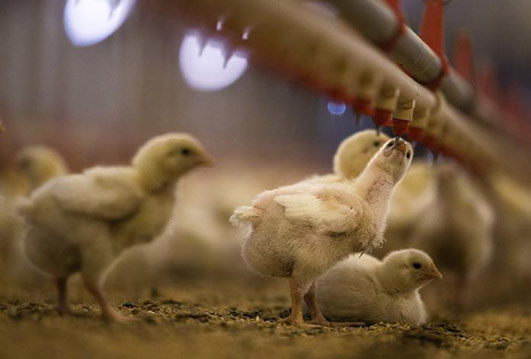The summer weather is hot, and the egg production rate will drop, especially after entering the sky, so the farmers need to do the following management to ensure the egg production rate of the laying hens in summer.
Feeding management points
1. Pay attention to the weather forecast, pay attention to the high temperature and high humidity weather, especially after the rain, the higher humidity will cause the wet curtain to cool down and increase the heat stress.
2. Reduce the density of chicken battery cage feeding. Appropriately reduce the number of replenishment, timely eliminate residual, weak, sick chicks, expand the group as early as possible, reduce the stocking density.
3. Adjust the feeding time. After 2-4 hours of feeding, the heat production increases, so high temperature weather avoids feeding during high temperature period, and feeding time avoids high temperature period, preferably before 8 am and after 5 pm. Pay attention to the mildew and deterioration of the feed to prevent poisoning or intestinal diseases, daily cleansing and limiting light once.

4. Strengthen night ventilation and cool down. Conducive to the chickens to dissipate the heat during the day, increase feed intake.
5. Adjust the waterline in time to ensure sufficient clean drinking water. In high temperature weather, the chickens need a large amount of water to ensure that the chickens have sufficient water, and the lower drinking water temperature can lower the body temperature.
6. Timely supplement electrolytes and vitamins. The flock has a large amount of respiration, and at the same time, it has a large amount of drinking water, which is easy to cause imbalance of the acid-base balance. At this time, the electrolyte should be replenished in time; at the same time, the compound vitamin is supplemented to improve the body's ability to resist heat stress.
7. Reduce the stocking density. Laying hens are particularly afraid of heat. In summer, people should reduce the stocking density of chickens in time according to the rising temperature. The density of flocks should be based on ambient temperature, humidity and the type of house. In the hot summer, reducing the stocking density can effectively reduce the small ambient temperature in the house, which is of great significance in production practice. When captive laying hens enter the summer, it is advisable to raise 5 per square meter; after entering the volts, it can be reduced to 4 per square meter.
The above points are the advantages of raising chickens in poultry battery cages described by the author. Generally, the breeding quantity is less than 1,000. It is best for farmers to use flat or free-range breeding. This breeding method is the most cost-effective and can quickly return to cost. If the breeding volume is more than 3,000 or more, then the author recommends the use of layer chicken cages, which is convenient and labor-saving.
